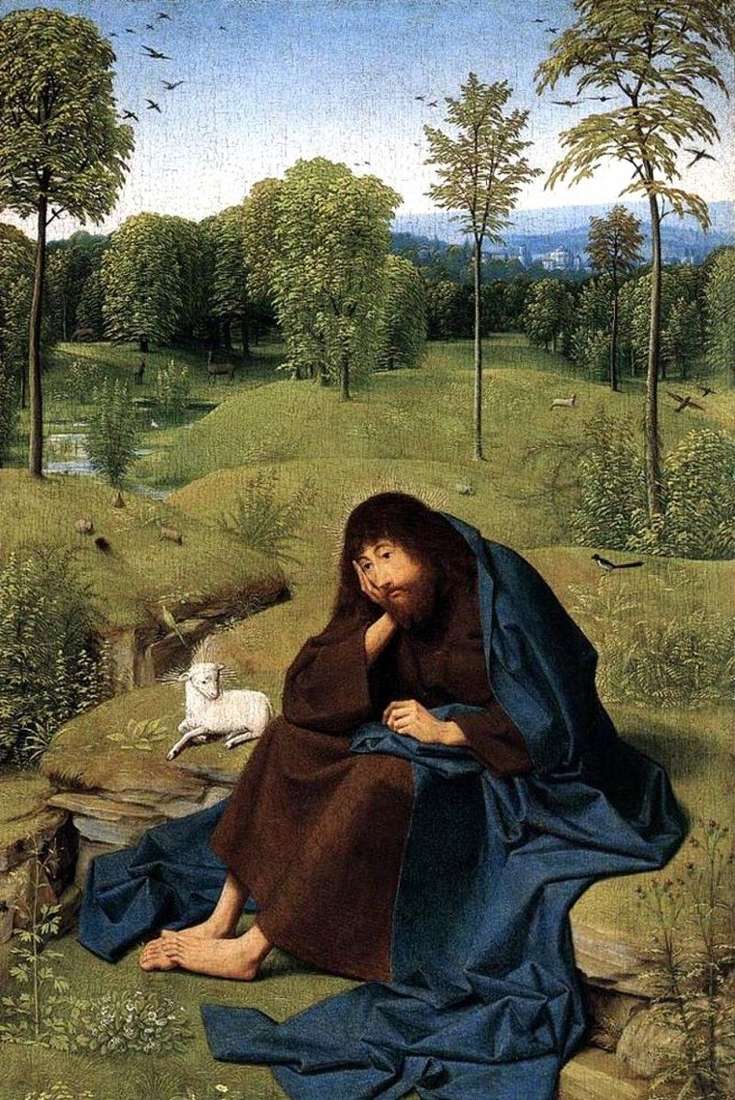
The poetic fusion of man with nature is captivated by the painting “St. John the Baptist in the Desert.” The painting is filled with peace and quiet, typical of the most significant works of Gertgen. Among the freely developing deep into the landscape, with shady groves of lakes and lawns with unpretentious forest flowers, John is buried immersed in deep thought. The image of John is an incoherently tailed commoner in a rough homespun apparel, barefooted feet, but with the face of a thinking spiritually significant person. At his feet lay a lamb, symbolizing the impending sacrificial death of Christ.
The master discovered the soft charm of a simple human feeling – he is interested in the inner, spiritual world of man. In an incoherent figure with an ugly but charming face, the artist seems to foresee the “rembrandt” ideal of the future, implying the primacy of moral greatness over physical beauty.
The small format of the work is related to his new appointment – the work is written for a burgher apartment house. Such domestic images of individual piety have replaced the monumental church altars that prevailed in the first decades of the 15th century. The appearance of such domestic images is associated with the spread of religious art in the world, as it descends to the earth, into the sphere of human feelings, thoughts and aspirations.
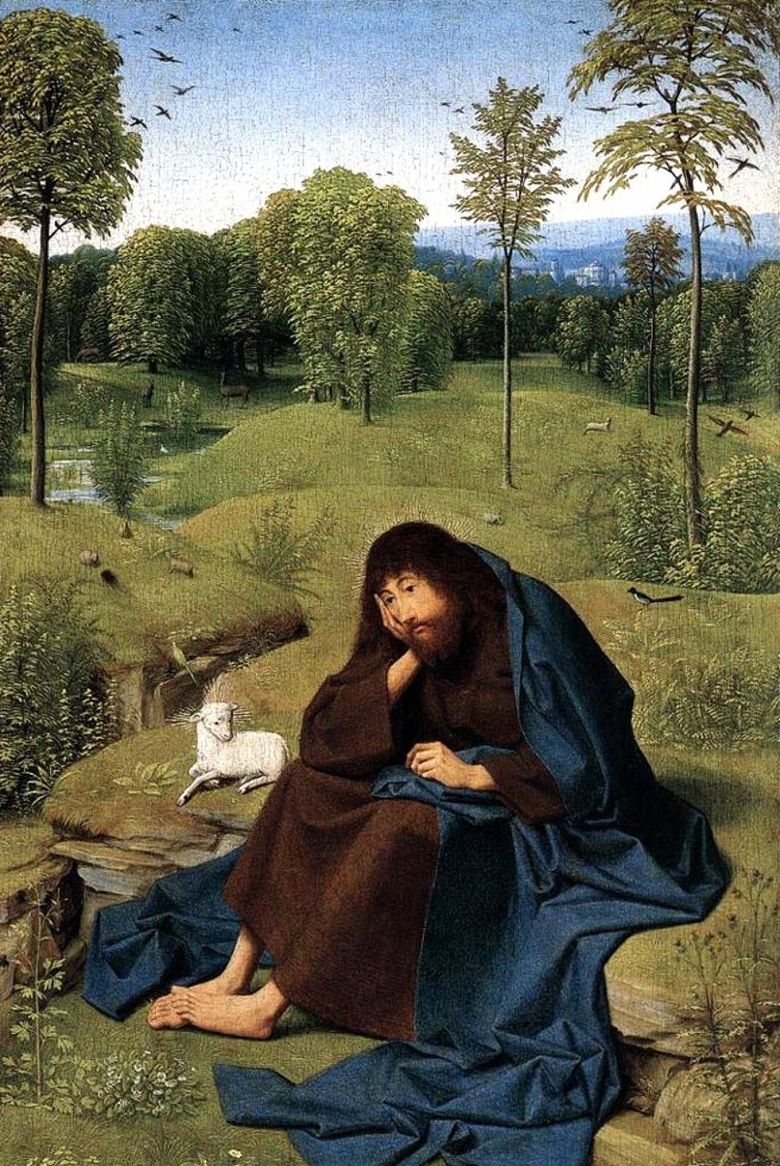 Saint Jean-Baptiste dans le désert – Jans Sint toth Gertgen
Saint Jean-Baptiste dans le désert – Jans Sint toth Gertgen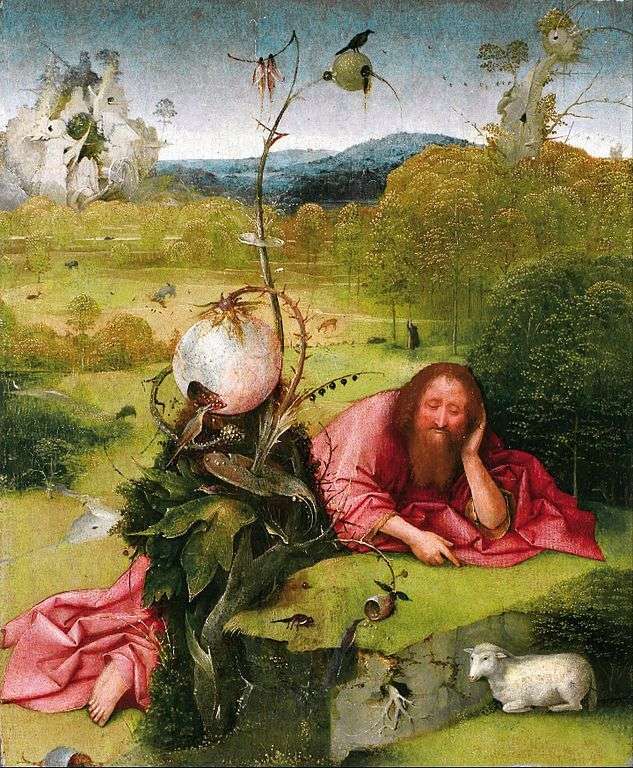 John the Baptist in the Wilderness by Hieronymus Bosch
John the Baptist in the Wilderness by Hieronymus Bosch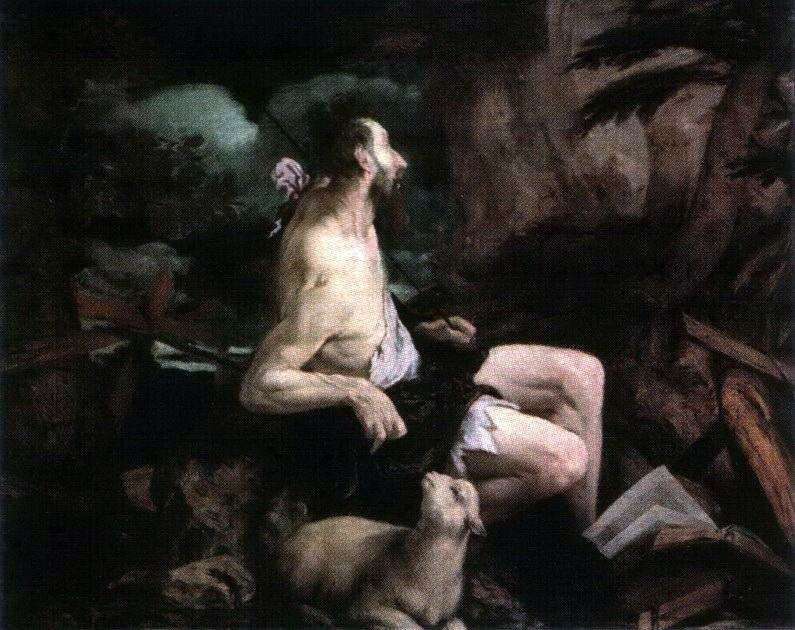 John the Baptist in the Desert by Jacopo Bassano
John the Baptist in the Desert by Jacopo Bassano John the Baptist by Michelangelo Merisi da Caravaggio
John the Baptist by Michelangelo Merisi da Caravaggio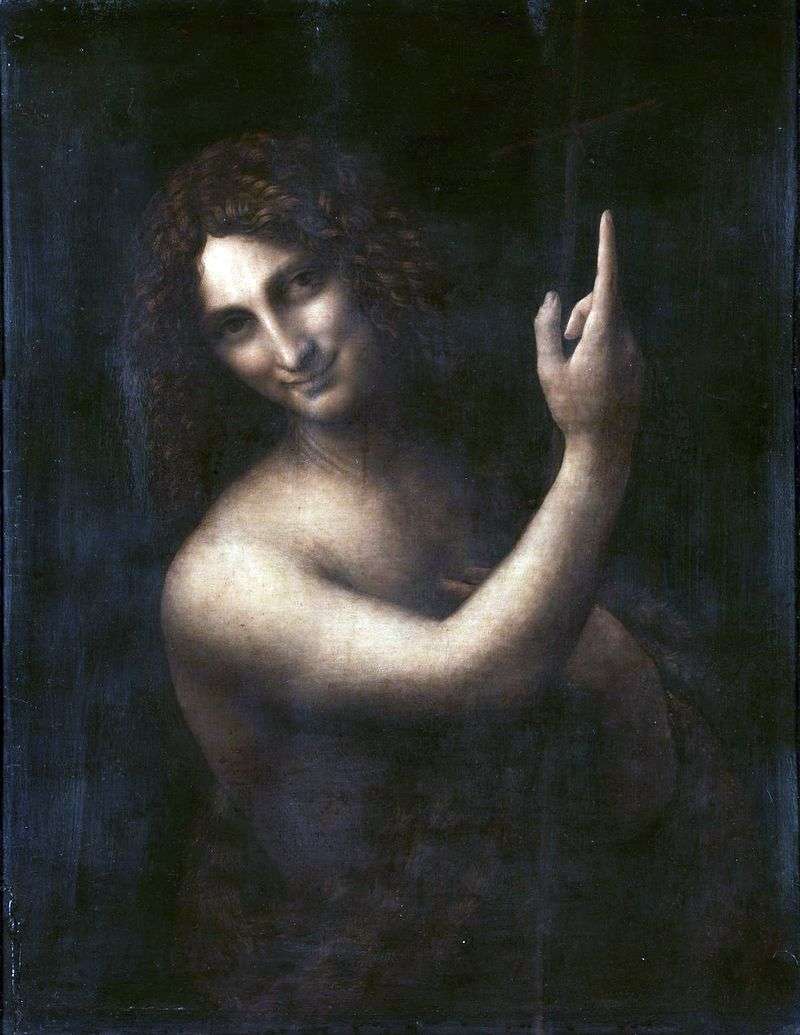 St. John the Baptist by Leonardo da Vinci
St. John the Baptist by Leonardo da Vinci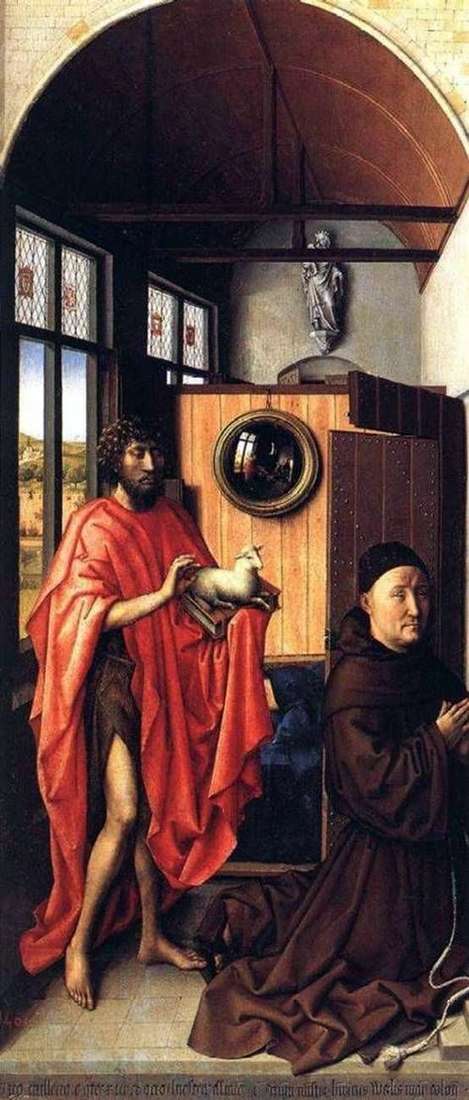 John the Baptist and Henry von Werl by Robert Kampen
John the Baptist and Henry von Werl by Robert Kampen Salome with the head of John the Baptist by Michelangelo Merizi da Caravaggio
Salome with the head of John the Baptist by Michelangelo Merizi da Caravaggio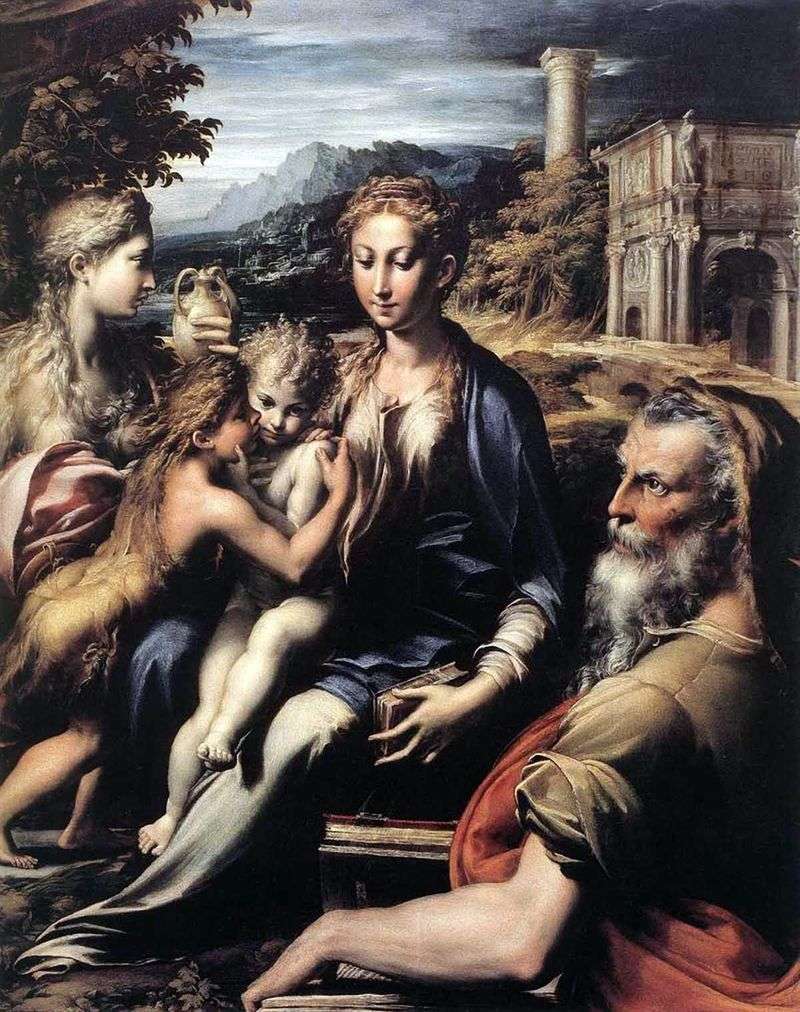 Madonna on the throne, Zechariah, John the Baptist and Mary Magdalene by Francesco Parmigianino
Madonna on the throne, Zechariah, John the Baptist and Mary Magdalene by Francesco Parmigianino